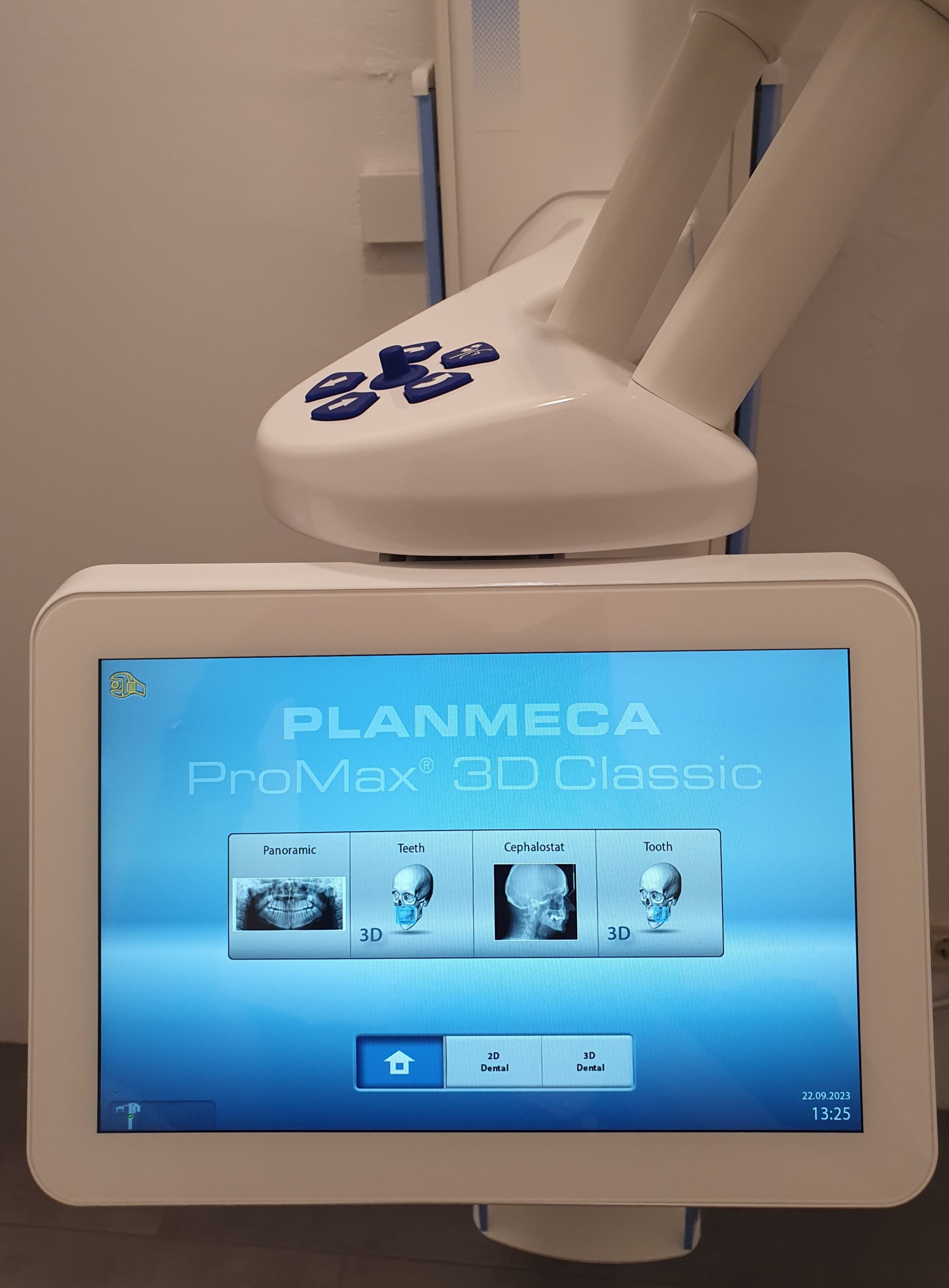Radiological services – CBCT, orthopantomogram, X-ray, cephalometry
Our dental clinic is equipped with the latest radiological technologies that allow us to perform precise diagnostics and efficiently plan treatments. The use of various radiological methods is crucial in identifying dental problems at an early stage, significantly contributing to the success of therapeutic interventions. Our team of experts uses these techniques to ensure that every treatment is tailored to the individual needs of our patients.
Dental X-ray
Dental X-ray is a basic radiological technique used to detect cavities, examine the condition of tooth roots, and diagnose periodontal diseases. This quick and simple procedure is essential for the proper planning of many dental procedures, allowing us to see what is not visible to the naked eye.
Orthopantomogram – Panoramic X-ray of Teeth and Jaw
Orthopantomogram, also known as an orthopantomogram or panoramic X-ray, is a key radiological technique that provides a panoramic view of the entire jaw, including the upper and lower jaws, as well as all teeth. It is used for a detailed diagnosis of various dental conditions, from assessing the position of wisdom teeth to identifying hidden dental infections and planning orthodontic treatments. Digital orthopantomograms provide high-quality images with reduced radiation exposure, making it safer and more effective for regular dental check-ups. This method is not only efficient but also non-invasive, providing crucial information needed for successful planning and execution of various dental procedures.
CBCT (Cone Beam Computed Tomography)
CBCT (Cone Beam Computed Tomography) is a specialized radiological technique that provides detailed three-dimensional images, greatly enhancing the diagnosis and planning of complex dental procedures. CBCT imaging allows for extremely precise visualization of dental structures, including CBCT scans of teeth, which are essential for implant planning and jaw anatomy evaluation. Additionally, CBCT sinus and CBCT sinus scans are used for a detailed analysis of sinus structures, aiding in the planning of sinus surgeries and related diagnoses. The CBCT method offers an unparalleled level of detail compared to traditional radiological techniques, making it indispensable in modern dental medicine. This detailed view allows for optimal implant positioning, reducing the risk of complications and improving treatment outcomes.
Cephalometry
Cephalometry is a specialized radiological technique primarily used in orthodontics for analyzing the morphological characteristics of the face and dental arches. The images obtained through cephalometry are crucial for planning orthodontic interventions, allowing a detailed evaluation of the relationships between facial bones and teeth.
Advantages of Modern Radiological Techniques
Modern radiological procedures such as CBCT and digital orthopantomograms offer numerous advantages, including reduced radiation exposure, faster imaging times, and high-quality images. These procedures allow us to diagnose and plan treatments more precisely, resulting in better long-term outcomes for our patients.
Contact Us for More Information
If you have any questions about our radiological services or wish to schedule an appointment for radiographic imaging, feel free to contact us. Our team is ready to provide all the necessary information and ensure that your experience is as pleasant and informative as possible. Our doors are always open to you, whether it’s for a routine check-up or a specific diagnostic procedure.


